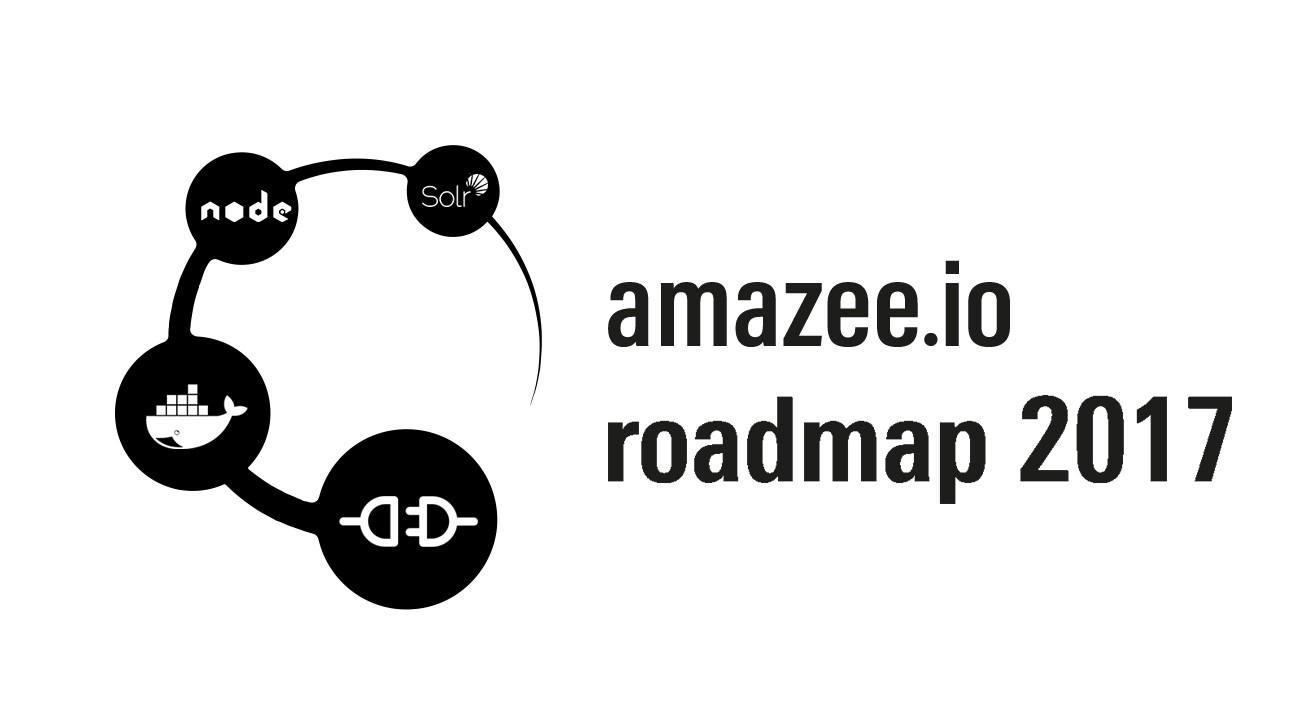Michael Schmid
|
Jan 18, 2017
|4 min read min read
Search Topic

One of the biggest challenges of any modern tech company is keeping current with changing technology. Amazee has a long history of being an early innovator and adopter and it’s no different at amazee.io.
As a Platform as a Service company, it’s important that our clients see the work we do to keep our product competitive and useful. In the spirit of transparency (and not a little bit of pride), we’d like to share our 2017 product roadmap.
Before we begin, a short introduction to our product delivery process. At amazee.io, we build iteratively, and simultaneously, on many areas of our infrastructure, to produce a shippable MVP or minimum viable product. This approach is common for software and product development, and allows us to test small changes, whether features or functionality, without disrupting service.
While we can’t provide a definitive release calendar, we can give you an idea of the kind of features we’re looking to roll out. If you’re interested in real-time updates, you can check the current status of our roadmap here: https://trello.com/b/Beax16Dr/amazee-io-roadmap
Developers currently receive chat support from our team via Slack, which works well for our team size. In Slack we can provide support, push changes for clients, and be generally available. However, while great for 1:1 attention, this approach isn’t scalable, and it’s also not the most efficient use of anyone’s time.
To scale our support without sacrificing the client experience, we are working to develop a public API and CLI tool which will allow more self-service functionality. With this, developers will be able push changes themselves, without needing to contact support.
In addition, we will be launching a WebUI to make changes even easier for non-technical teams. The WebUI will feature access to all configurations and logs like the CLI will, but with drag-and-drop deployment functionality and other user-friendly goodies.
We are rebuilding our deployment infrastructure into a microservice architecture to allow for better customization and integration with more tools. At a high level, with this new infrastructure, developers will be able to trigger a redeployment via Slack, better handle failed deployments, deploy multiple branches at the same time, and to deploy specific hashes instead of branches.
We’ve finished the first implementation of this build and are currently testing the functionality on internal sites. Stay tuned for our progress on this!
As you may have gathered from previous posts and sessions, we’re big fans of Docker. We use Docker for our local development environments and we love it. Docker allows developers to create a local dev site that’s identical to its production environment, which is great! But Docker can do so much more. It can work in Production!
We are actively working on architecting a production environment, with the goal of having every service we offer (nginx, Varnish, PHP, MariaDB, etc.) running in a separate microservice. This means faster deployments, and easier scalability.
With the required split up of our stack and the new use of microservices, it will be easier to add additional services like ElasticSearch, MongoDB, and different versions of existing services.
To remain flexible to client needs, and to avoid tool bloat, we are intentionally building this stack to allow clients to cherry-pick the tools and services from our suite of options.
As for the suite of options, we are focusing on the most requested services to implement first, so please let us know what technology you want to see!
amazee.io currently provides support for Apache Solr 3.5, but many sites are requiring versions 5 or 6. We are actively testing Apache Solr 5 and 6 with Docker and are looking to launch this soon. If you’re interested in testing this in beta, contact us.
As the web moves towards using Node.js, and as building websites with decoupled frontend systems gains in popularity, it’s become necessary for us to integrate Node.js within our stack.
Though in testing, we already have the first sites fully running with an additional Node.js Frontend, all built and running via Docker.
Our stack includes PHP 5.6 and PHP 7.0, which is loaded with huge performance improvements. PHP recently released Version 7.1, which has its own improvements, so we are currently working to support this new version.
Each new feature we integrate (ie Apache Solr) in our stack has positive implications for the local development environment, where it is also available.
In addition, we have a few features available uniquely for the Local environment. One of these features is MailHog, a Docker container which makes development with emails much easier.
Finally, in addition to integrating existing tools and services, we want to make it possible for clients to make improvements and integrations of their own. Currently we are exploring ways to allow developers to host customized Docker Images on our hosting platform. First, we need to tackle the big challenges like security, monitoring, and responsibility, which we believe that we can do.
And there you have it, an ambitious list of new features we’ll be rolling out in 2017. Of course our wish-list is many features deep, but we don’t want to commit to them so early out. That wouldn’t be agile! We’re looking ahead and keeping our dance card open for whatever new technology comes down the road.
If you have an idea for a new tool, technology, or service you’d like to see on amazee.io, talk to us at hello@amazee.io, via twitter @amazeeio, or in Slack.
Original roadmap icon created by Kirby Wu, thanks ❤

